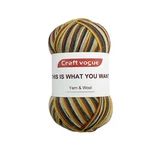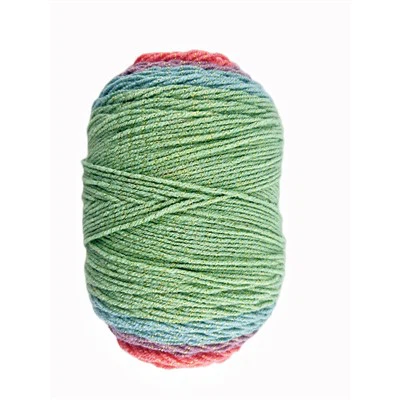Knitting With Different Weight Yarns
Weaving clothes is an interesting and challenging handicraft. Choosing the right wire is crucial for the success or failure of weaving clothes. Different weights of wire can produce different effects, so there are some things worth considering when you decide to use different weights of wire.
Understand wire weight
Firstly, let's understand the weight of the wire. The weight of wire refers to the weight of each yard of wire. Usually, we use the following four wire weight classifications: ultra coarse, coarse, medium, and fine. These classifications are based on the thickness and volume of the wire. The weight of ultra thick wire is suitable for needle and hook sizes of 11 and above, with a weight of over 50 grams per yard of wire. The weight of thick wire is suitable for needle and hook sizes between 9 and 11, with a weight of 25 to 50 grams per yard of wire. Medium wire weight is suitable for needle and hook sizes between 6 and 8, with a weight of 16 to 25 grams per yard of wire. The weight of fine wire is suitable for needle and hook sizes between 1 and 5, with a weight of less than 16 grams per yard of wire. In addition, the material and fiber type of the wire also affect the weight of the wire.
The effect of different wire weights and needle and hook sizes
Next, let's take a look at the possible effects of different wire weights and corresponding needle and hook sizes. When using ultra thick wire weight, you can use relatively large needles or hooks to quickly weave wider textures. This type of wire is suitable for weaving items such as large scarves or blankets. The weight of thick wire allows you to quickly weave items of moderate size, such as sweaters and scarves. When using medium wire weight, you can more easily weave complex patterns or other details. Finally, the weight of fine wire is suitable for weaving fine knitwear, such as women's shirts, shawls, and hats.
Mix and match wire weight
Mixing and matching wire weight is a challenge, but if you choose the correct wire combination, it may produce stunning results. When mixing and matching the weight of wire, you can mix and use different weights of wire in the same project, such as weaving a sweater with thick wire and sewing some lace woven with thin wire on the pocket strap.
Precautions for weight of mixed and mixed wires
The weight of mixed and mixed wires should pay attention to the following points. Firstly, any mix and match should be intentional, rather than having to use other wires simply because you don't have enough weight available for one type of wire. Additionally, please ensure that wires of different weights can be properly handled and merged together, otherwise you may get loose connections or twisted loose wire ends. Mixing and matching the weight of the wire requires longer time and more skills to make. Therefore, please ensure that you understand the characteristics of each type of wire before making a mix and match weight.
In short, using wires of different weights can add more details and textures to your weaving project. When choosing suitable wires and attempting to mix and match wires of different weights during the weaving process, please pay attention to their characteristics and interconnectivity to achieve the desired effect.
Hot Tags: knitting with different weight yarns, China, suppliers, manufacturers, factory, custom, wholesale, for sale, price list, Best 100 percent acrylic yarn, 100 acrylic dk yarn, Super Chunky Knitting Yarn, high-quality Variegated Acrylic Yarn, Premier Home Cotton Yarn, soft cotton acrylic blend worsted yarn
Previous
Bulky Yarn For Arm KnittingNext
Gray Cotton YarnYou Might Also Like
Send Inquiry


















